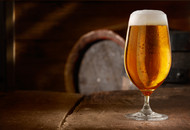Behind the Pour: How a Draft Beer System Works
11th Apr 2024
When you sit down at your favorite pub and order a cold, frothy beer on tap, have you ever wondered how that golden elixir travels from the keg to your glass? The magic behind this process lies in a complex yet fascinating system known as the draft beer system. In this article, we'll take you behind the scenes to uncover the inner workings of a draft beer system.
The journey begins in the keg storage area. Here, kegs filled with delicious beer are kept at the ideal temperature, ensuring that each pint served is as crisp and refreshing as the next. The most efficient way to cool beer as it travels from the keg storage to the draft tower is through a glycol chiller. This innovative system uses a mixture of water and glycol to maintain the perfect temperature, guaranteeing the beer's freshness and quality.
As beer rests in the kegs, it is pressurized to maintain carbonation and freshness. This is where the magic of "beer gas" comes into play. Beer gas is a blend of carbon dioxide (CO2) and nitrogen (N2), carefully regulated to deliver the perfect pour. CO2 maintains carbonation, while nitrogen, which is less soluble in liquid, creates that creamy head and smooth texture you love in certain beer styles like stouts and porters.
Now, let's delve into the heart of the draft beer system—the dispensing equipment. The tap handle, the bartender's trusty tool, controls the flow of beer from the keg, offering precise control over each pour. Beer lines, essential tubes in this process, transport the beer from the keg to the faucet; their meticulous maintenance is imperative to prevent contamination and preserve the beer's pure flavor. Typically, in a long draw beer system, liquid is transported through a 'Trunk Line', which is essentially a bundle of insulated tubing. This tubing allows beer to stay fresh and cold within the lines, even if it is not in a actively cooled environment. A glycol chiller is vital in this process.
At the faucet, the magic unfolds as liquid gold is transformed into a crisp, refreshing beverage. Bartenders skillfully pull a lever or turn a handle to release the liquid, ensuring a perfect pour every time. Underneath, a drip tray serves a practical purpose, catching any drips or spills, maintaining a clean and presentable bar environment. Meanwhile, behind the scenes, regulators work tirelessly, maintaining the correct gas pressure in the keg and controlling the beer's flow rate. This meticulous regulation guarantees each pour's consistency and perfection, with adjustments to carbon dioxide (CO2) and nitrogen (N2) levels as needed to prevent over-carbonation and achieve the desired effervescence.
Maintaining the draft beer system's cleanliness is paramount. Bacteria, yeast, and mold can quickly spoil the beer if the system is not kept in pristine condition. Regular cleaning and maintenance of lines, faucets, and other components are crucial for preserving the quality and flavor of the beer.
The final touch in the draft beer journey is in the hands of the bartender or server. They have the expertise to pour beer with precision, ensuring that it arrives in your glass with just the right amount of foam and a pristine presentation.
The draft beer system is a well-orchestrated symphony of equipment, gases, and expertise, all working together to deliver that perfect pint to your table. From keg storage and cooling with glycol chillers to the careful balance of CO2 and nitrogen in beer gas, every detail matters in ensuring that your draft beer experience is nothing short of exceptional. So, the next time you savor a draught beer, take a moment to appreciate the intricate process that brings it to your glass – cheers!

